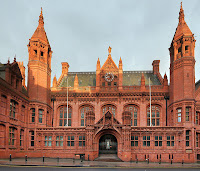 Once a drab, grimy urban basket case, England’s second-largest city – nicknamed ‘Brum’ – has spectacularly re-invented itself as a vibrant, cultural hot spot. Huge regeneration projects have breathed life into the industrial landscapes and canals that crisscross the city; now there are more glamorous shops, buzzing pubs and jumping nightclubs than you can shake a bargepole at.
Once a drab, grimy urban basket case, England’s second-largest city – nicknamed ‘Brum’ – has spectacularly re-invented itself as a vibrant, cultural hot spot. Huge regeneration projects have breathed life into the industrial landscapes and canals that crisscross the city; now there are more glamorous shops, buzzing pubs and jumping nightclubs than you can shake a bargepole at. Mind you, it’s still no oil painting. The familiar destructive brew of WWII bombs and woeful town planning left a legacy of concrete and ring roads that will probably never fully be disguised. But, no matter: Birmingham is making the most of what it’s got. Established cultural and architectural gems dot the city centre and planners keep coming up with ever more innovative architectural makeovers: the striking postindustrial Bullring shopping centre is just the latest. Although the manufacturing industry that defined Birmingham as the ‘workhorse of the world’ is declining (workers at the Longbridge
 Rover car factory recently felt the pinch of the moribund UK car industry), the city is well placed to adapt. More self-assured, cool and confident than it has been in many a year, it is hampered by only one thing – its inhabitants’ accent, which is consistently voted England’s least attractive.
Rover car factory recently felt the pinch of the moribund UK car industry), the city is well placed to adapt. More self-assured, cool and confident than it has been in many a year, it is hampered by only one thing – its inhabitants’ accent, which is consistently voted England’s least attractive.  Show in Lonely Planet
Show in Lonely Planet

































